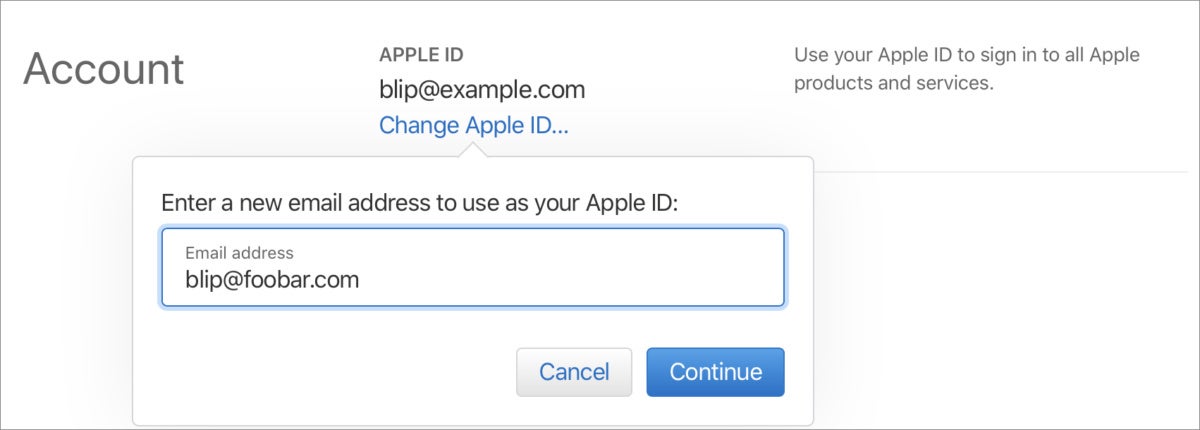Apple lets you register an Apple ID using an email address it offers or with what it calls a “third-party” address—that’s one from any other service. In the latter case, if you use an email address for a personal Apple ID account and you know you’ll lose access to that address—maybe you’re about to quit a job, retire, be laid off, or, gulp, be fired!—you should make sure and change it now or ensure future access.
For these third-party addresses, it’s an easy change. Apple lets you simply pick another address to use, and then you confirm the receipt of a message at that address so Apple can be sure the new address is under your control.
Go to the Apple ID site and log in.
Click Change Apple ID.
Enter a new email address and click Done.
Enter the code you receive in an email.
Log back in to all the devices and services that use the previous email for that Apple ID account. (You may or may not be prompted to do so.)
(If you don’t have another third-party email address you can use, set up a fresh Gmail account and use that. For extra points, you can even forward email to that new Gmail account to another email address you use, so that you don’t have to log in to deal with verification messages or other Apple ID-related issues.)
 IDG
IDGYou can change a “third-party” email address that’s your Apple ID login.
The situation is more difficult and problematic for Apple-controlled addresses—those ending with me.com, mac.com, and icloud.com:
You can’t change an Apple ID that uses one of those domains to a third-party email address.
If you change your Apple ID from a third-party email address to one of those domains, you can never change it back.
If you have a work-owned Apple account that you’ve used with your Apple ID as its login email address, you’re effectively stuck as Apple no longer lets you register email-only accounts. A new icloud.com email address can only be created as part of an Apple ID. And the address is associated during creation with that Apple ID account.
The only possible course of action is either to wipe your personal information from the Apple ID account—from contacts, calendars, photos, notes, iCloud Drive, and more—and lose any associated purchases you made for yourself, or convince your employer to let you take the address with you. In that case, change the password and any associated emails via the Apple ID site to be sure it’s entirely under your control.
This Mac 911 article is in response to a question submitted by Macworld reader Sue.
Ask Mac 911
We’ve compiled a list of the questions we get asked most frequently along with answers and links to columns: read our super FAQ to see if your question is covered. If not, we’re always looking for new problems to solve! Email yours to [email protected] including screen captures as appropriate, and whether you want your full name used. Every question won’t be answered, we don’t reply to email, and we cannot provide direct troubleshooting advice.